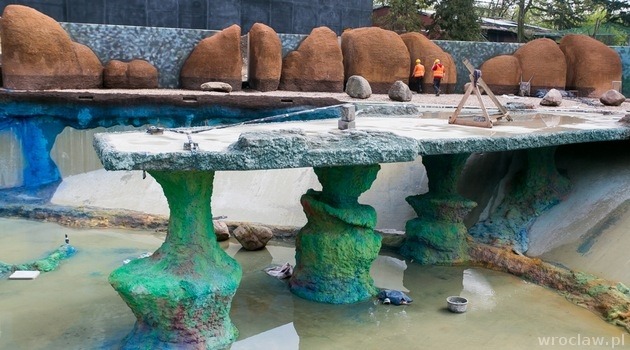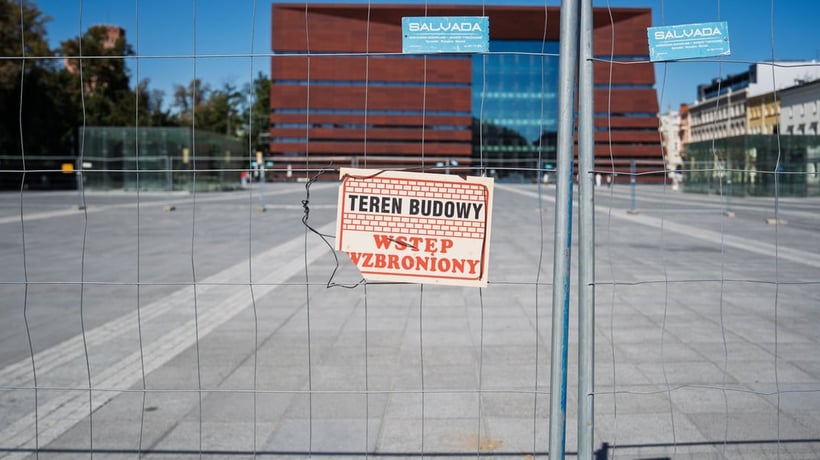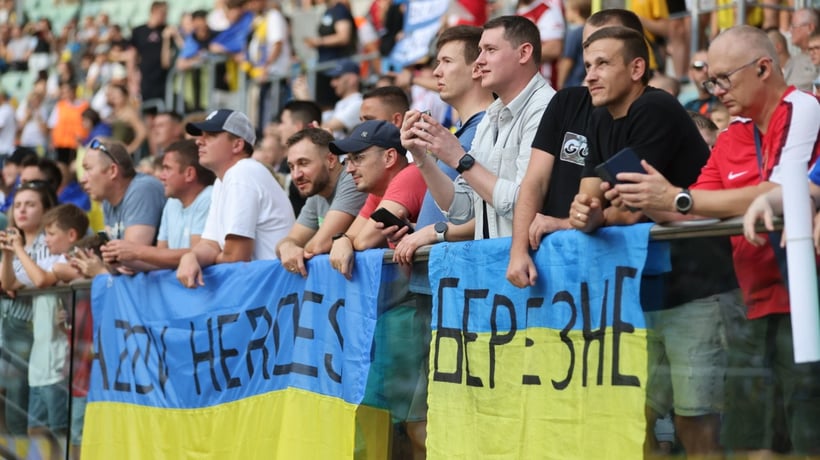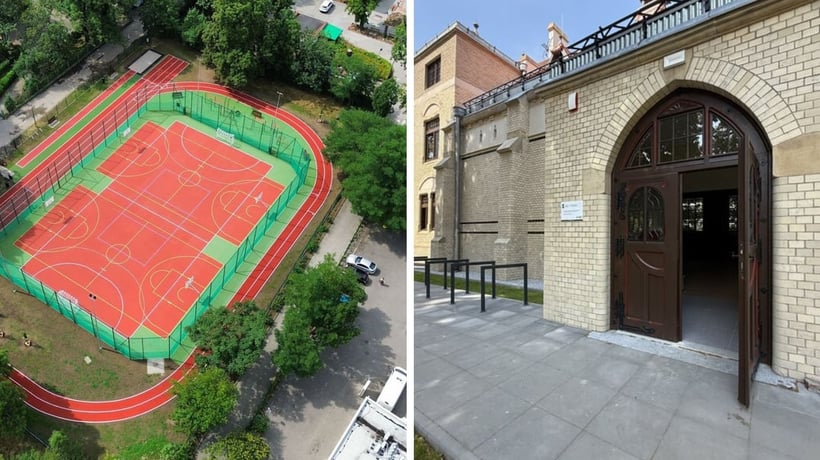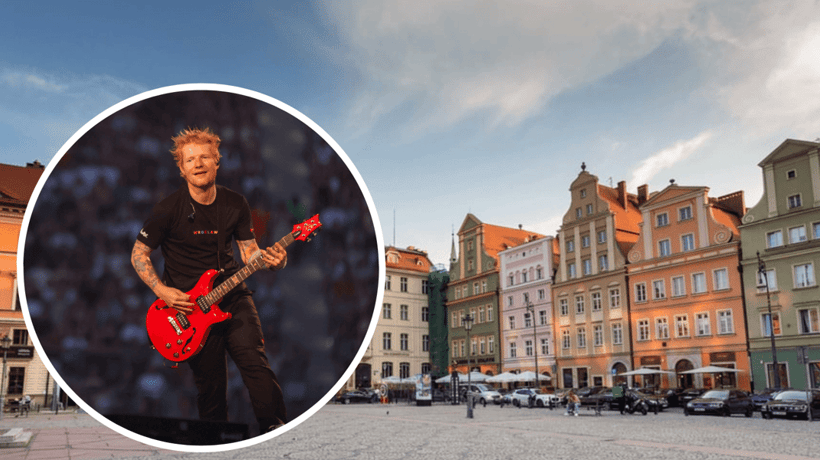The Mozambique Canal in which sharks will swim shimmers with almost all colours of the rainbow. The only missing things are corals and a small portion of artificial sand. “At first, we will wait until the swimming pool is filled with water for test purposes. Only after that water is removed from the pool, will we install and paint artificial colours,” explains Piotr Gąsior, Works Manager in Qotaller – a Spanish company responsible for decorations in Oceanarium-Africarium. The same works will be performed in the Red Sea tank.
Corals have arrived in parts from Spain, where they were produced from special resins specially for the Wroclaw Africarium. In total, 1,500 such corals will be installed there.
Trees in water in the hippopotamuses area
Some new elements have been added to the tank for hippopotamuses, where decorations have already been made from artificial rocks. We mean a collapsed tree trunk, which will be submerged, but well visible to visitors from above. There is no coincidence here. The tree under the water is positioned in such a way that impurities can easily flow down to the designated place. The area is specially arranged so that hippopotamuses can freely go out of the water onto the shore.
“It is not the only tree in the tank. We will also add an acacia to divide the site, because hippopotamuses must live in a separate zone,” says Piotr Gąsior.
Congo will be inhabited by African clawless otters, too
Artificial and real trees will soon appear in the Congo jungle, which will be situated in the left part of Africarium-Oceanarium (from the main entrance). Although reproductions of African trees were initially planned to be made on the spot, they will ultimately be created in Spain. For the time being, the first artificial tree on which specialists from the Spanish company worked has appeared in the tank for crocodiles. Together with a net, it will separate the swimming pool for crocodiles from the swimming pool for African clawless otters.
In a day or two, plants from the Netherlands will also be planted in Congo to form “green walls”.
More nests for penguins
The beach for sea lions is finished. We must only finish the swimming pool with sand. More work is to be done in the tank for penguins, where rainwater has gathered, which makes it difficult to perform work. Erratic boulders have been scattered throughout the beach and nests for nestlings have been built in the back-up facilities. It is only necessary to mount the door and flaps from above so that mothers laying eggs and their offsprings feel safe. Holes for nests in rocks on the beach were made a long time ago, but carers of penguins will not have access to them.
Radosław Ratajszczak, the director of the Wroclaw Zoo, hopes that the colony of 60 jackass penguins to be brought to Africarium will expand quickly.
Eliza Głowicka
Photos by Tomasz Walków
Film by Arkadiusz Cichosz



